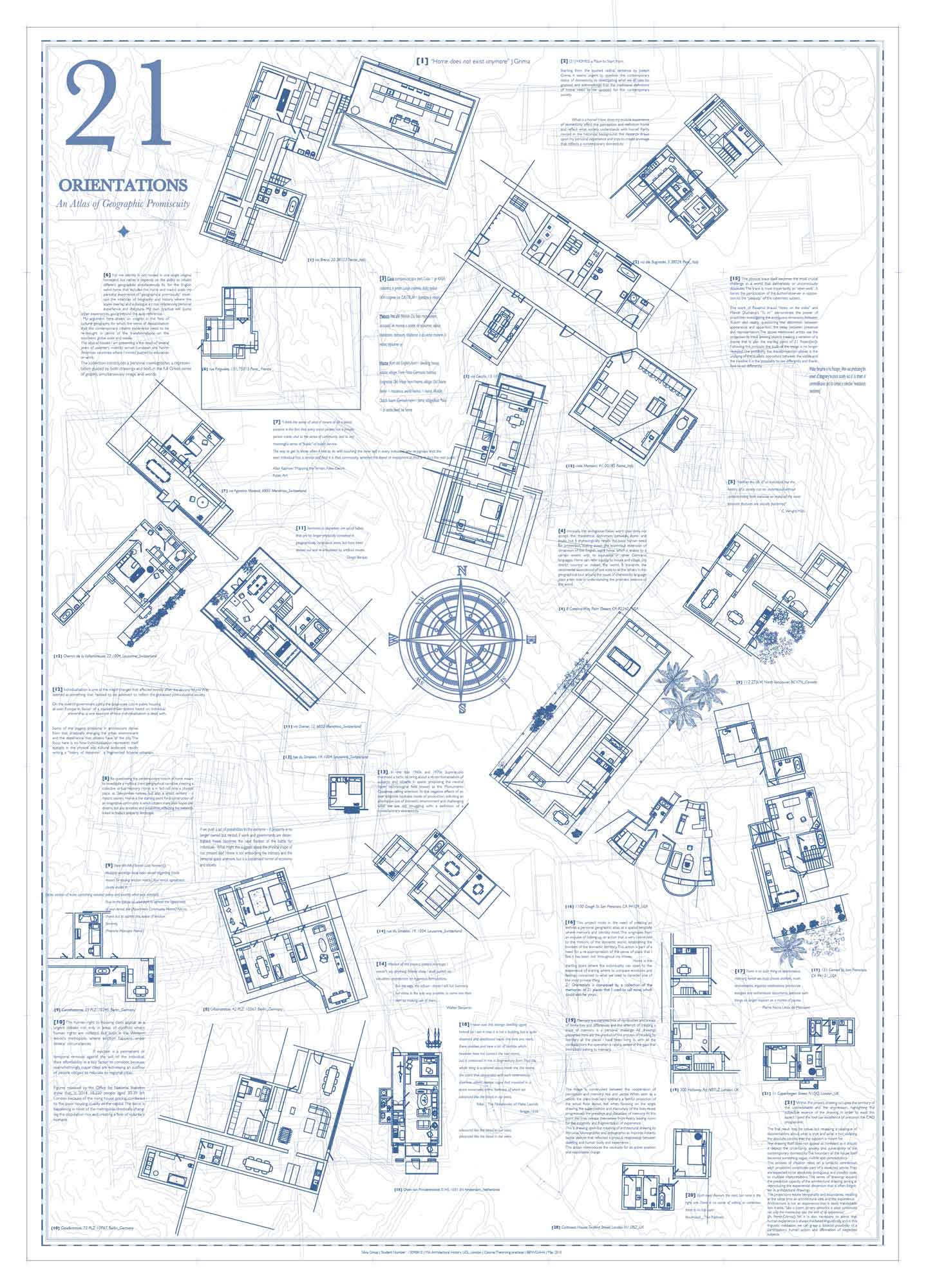
I never saw this strange dwelling again. Indeed, as I see it now, it is not a building, but is quite dissolved and distributed inside me: here one room, there another, and here a bit of corridor which, however, does not connect the two rooms, but is conserved in me in fragmentary form. Thus the whole thing is scattered about inside me, the rooms, the stairs that descended with such ceremonious slowness, others, narrow cages that mounted in a spiral movement, in the darkness of which we advanced like the blood in our veins.
R. M. Rilke, The Notebooks of Malte Laurids Brigge, 1910
Each layer flavours the next, but none is the right one. There is no sense of editing or correction, there is no top layer.
N. Bourriaud, The Radicant, 2009
21 Orientations is a personal cosmographia, a representation guided by both drawings and texts for a collection of memories of 21 places that I used to call home, during a variety of rootless and voluntary displacements.
This project originates from an impulse of tidying up, sorting and making space for a re-appropriation of a vulnerable domesticity. Questioning the contemporary notion of home means to investigate a trans-geographical narrative, going beyond of the notion of a physical place, accepting to enter a virtual territory – a rhetoric country.
21 Orientations is a personal geographical atlas, where memory and reality meet in a spatial template. Memory is a complex mix of continuities and breaks, of similarities and differences. The attempt to physically trace memory is the challenge of overlapping two different scales, setting a dialogue between personal and collective experience. As an “open work” the trace investigates the ambiguous dimension between illusion and reality, questioning the distinction between appearance and apparition, the delay between presence and representation.
This project relies on the multifold process of recalling by memory all the places I have been living in, stretching the spatial representation between experience and an architectural idea. Following this principle, the technical drawing occupies the territory of the unpredictable and the imprecision and its reliability is challenged. All drawings do not appear as confident as they should. The final result may be casual, but revealing: the boundary of home itself becomes something vague, mobile and contradictory, depicting a possible contemporary notion of domesticity.
Silvia Groaz is an architect and currently a PhD candidate in architectural history at EPFL, Switzerland. She was a visiting scholar at Columbia University in 2018. She received the MA in Architectural History with Distinction at Bartlett (UCL) in 2015 where she attended Prof. Jane Rendell’s class Site-Writing Practice. She holds a MSc in architecture from EPFL, and a BSc in architecture from the Accademia di Mendrisio, Swizerland.
–
Marcel Duchamp, Tu m’, 1918
Walter Benjamin, Passagenwerk [The Arcades Project]
Pierre Nora, Lieux de Mémoire, 3 vol., 1984; 1986; 1992






































































